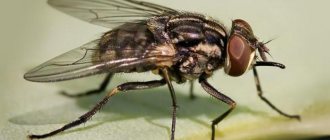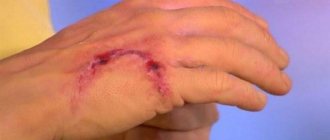Description of the pathology
Cryptorchidism is a common hereditary condition in which one or two testicles do not descend into the scrotum.
The testes may be located in the inguinal canal, perineum, or abdominal cavity. Sometimes they cannot be detected even with ultrasound diagnostics. With cryptorchidism, the puppy does not have any complaints, the pet feels great and nothing bothers him. If the testicles are not fixed in the scrotum by six months of age, doctors make a preliminary diagnosis - cryptorchidism. However, veterinarians often advise waiting up to 10 months and re-examining.
Small breeds are more susceptible to the anomaly than large ones. For example, cryptorchidism is often found in Spitz, Yorkshire terrier, pug, Chihuahua, toy terrier, Maltese, poodle, and Pekingese. The probability of pathology is 7-13% of all diseases in male dogs. With this phenomenon, the dog retains its sexual desire and hormone production.
Physiology of cryptorchidism in dogs and cats
First of all, it should be noted that this pathology is nothing more than a genetically congenital anomaly, leading to a delay in the release of the testicle into the scrotum. The testis can be retained in three places:
- at the wall of the abdominal cavity;
- directly in the inguinal canal;
- at the exit of the inguinal canal.
As a rule, the testis descends into the scrotum 10-14 days after birth, but with cryptorchidism in a dog (cat), due to shortening of the supporting ligamentous apparatus, and sometimes the spermatic cord itself, this descent does not occur or occurs to an insufficient extent. Cryptorchidism can be unilateral (if one testicle is not descended) or bilateral (if both are not descended).
Based on the statistics of the last 30 years, we can now safely say that:
- bilateral cryptorchidism is much less common (2.2%) than unilateral (98.8%);
- the likelihood of developing cryptorchidism in dogs (1.5 - 11%) is noticeably greater than in cats (0.4 - 1.2%);
- cryptorchidism in cats, apparently, is not so much a genetic disease as a physiological deviation;
- small breeds of dogs are more susceptible to this anomaly than large breeds of dogs;
- Cryptorchidism occurs more often in purebred dogs, and less often in outbred dogs;
- cryptorchidism in dogs is often observed in the following breeds: pug, English bulldog, poodle, Yorkie, Chihuahua, Maltese, Pekingese, Pomeranian, and sometimes boxer;
- Cryptorchid (in this case, an animal with the pathology of cryptorchidism) is more often than others susceptible to other genetic anomalies.
Of course, the main concern with cryptorchidism in dogs and cats is the likelihood of the development of neoplasms of a tumor nature (semenomas and sertoliomas) in the undescended testis. The fact is that for full sperm formation, the testicle must be in the scrotum at a temperature slightly lower than body temperature. With constant heating of the tissues of the testis, its structural components over time undergo gradual neoplastic degeneration and lead to the formation of tumors, which must be removed. The probability of such changes is 15 times higher than in an animal with normally located testes. Among other things, cryptorchids are susceptible to testicular volvulus and infertility.
Cryptorchidism has no visible effect on the production of testosterone, the development of secondary sexual characteristics, erection and sexual activity.
Symptoms of the disease
Before starting treatment in dogs, it is necessary to understand the nature of this disease. And first, dog owners should know that false cryptorchidism exists. This is when the puppy is scared of something, nervous or too excited, then the testicles can simply go into the inguinal canal.
This occurs in puppies that are not yet six months old. And this happens because the ligament on which the testes are located is very plastic. And therefore, it can shrink from any impact, like plasticine. In this case, veterinarians recommend waiting 6–7 months, and only then sounding the alarm if the symptoms are confirmed. Since at this age the inguinal canal is completely blocked and the testes should already be completely in the scrotum.
There are also cases that in an adult male dog, due to some unexplained reasons, the inguinal canal does not close and the testicular ligament still retains its elasticity. If there is nothing in the scrotum, then it is cryptorchidism. The problem with the disease is that this disease is inherited.
What is it like?
There are two types of cryptorchidism: abdominal and inguinal. The second type is considered the easiest, since in this case the testes are located either in the final segment of the inguinal canal, or directly under the skin of the groin. As a rule, they can be easily felt. The abdominal variety is characterized by the fact that the testicles are located in the abdominal cavity. They are not detected upon palpation; they can only be found using ultrasound, and even then not always. The classification also considers bilateral cryptorchidism in dogs (when both testes are missing) and unilateral, when only one testicle is “settled” in the abdominal cavity or inguinal canal.
Something else is more offensive. More precisely, it’s offensive - acquired cryptorchidism in dogs is not so common, but this also happens. Of course, an adult male dog’s testicles will not suddenly disappear, but if this is a puppy whose inguinal canal is not yet blocked... If for some reason (lack, excess of hormones, for example) the ligament on which the testes are held shrinks and does not return to its normal state, a completely normal male will turn into a cryptorchid. Finally, there is a very exotic condition, which scientists call “false hermaphroditism” (this phenomenon is often adjacent to cryptorchidism). Imagine a bitch... who has two neat, healthy testes in her abdominal cavity. Or a male dog who not only has a couple of testicles, but also two ovaries! The case, of course, is extremely rare, but if something like this is revealed, it is preferable to remove from reproduction not only this (this?) dog, but also all its closest relatives.
Reasons for appearance
The answer to the question: what is cryptorchidism in dogs? Any veterinarian will begin with the causes of this disease, and only then will he answer that, regardless of the causes, a distinction is made between embryonic cryptorchidism and postembryonic cryptorchidism. Depending on the stage at which the disease began to develop, you should start. And the nature of the disease directly depends on the following factors.
Anatomical features arise during the formation of the dog’s body. In this case, the spermatic cord and inguinal canal are too narrow to allow the testes to pass through. Disruption of the congenital folds at the base of the scrotum may also occur. There may also be very large testes in relation to the inguinal canal and an underdeveloped scrotum. Mechanical damage can cause a slowdown or inhibit the process of testicular descent.
Infectious diseases are often the cause of inflammatory processes in the genitourinary system. This greatly affects the development of the testes and serves as an obstacle to passage through the inguinal canal.
Hormonal disorders appear as a result of a lack of male hormones gonadotropin and testosterone (this disorder occurs during embryo development). This pathology becomes a problem and leads to incomplete contraction of the ligament.
Despite the fact that the pathology is purely “male”, from which only males suffer, it is genetically transmitted from the female. This is an autosomal recessive inherited abnormality. But this is not always the reason. Among the factors that influence cryptorchidism are:
- Anatomical reasons: narrow inguinal canal, large testes, underdeveloped scrotum, short spermatic cord, formation of connecting folds at the base of the scrotum.
- Mechanical - injuries or bruises of the scrotum and groin area, which slow down the process of descent of the testis.
- Hormonal factors. Insufficient production of testosterone and gonadotropin, which affects the connection of the fundus of the scrotum and testicle.
- Inflammatory processes that lead to reduction or complete obstruction of the inguinal canal and acquired cryptorchidism in dogs.
Causes
The reasons for the birth of puppies with congenital cryptorchidism are:
- deficiency of vitamins A and B9 in the diet of a pregnant female;
- unfavorable combination of genomes of the puppy’s parents;
- infectious inflammatory processes in the dog, blocking the natural movement of the testis into the scrotum;
- light weight of the puppy;
- hormonal disbalance.
Pedigree males are more susceptible to cryptorchidism than purebred dogs. This disease often occurs in dogs of small breeds or short-faced dogs. Especially under unfavorable circumstances, the following breeds are at risk:
- toy poodle;
- Spitz;
- Yorkshire Terrier;
- miniature dachshund;
- Cairn Terrier;
- chihuahua;
- Maltese;
- boxer;
- Pekingese;
- English bulldog.
The work of breeders with any breed is important here: closely monitor the offspring and promptly reject parents or puppies from mating not only with cryptorchid, but also with deviations in the structure of the teeth, in alarming behavior, with limb defects and other anomalies. Some breeders recommend removing a puppy with congenital cryptorchid from breeding and littermates.
Classification by palpability
Testicles can be palpable or non-palpable. The first group includes:
- Ectopic testes located in an atypical place for them. For example, the inner thighs.
- Retractile testicles are located in the upper zone of the scrotum and can be retracted into the abdominal cavity due to the high activity of the muscles of the spermatic cord. This is the cause of false cryptorchidism.
- Undescended testicles are any testicles located outside the scrotum (except the first two types).
Non-palpable testicles are:
- Intra-abdominal (located in the abdominal cavity).
- Canalicular (in the inguinal canal).
- Absent (testicles that did not form in the womb or were atrophied).
- Developing (testes that have not reached the required size).
What types of disease are there?
The following types of cryptorchidism are distinguished in puppies:
- a congenital species that developed during the embryonic period;
- an acquired appearance that appeared due to some external factors (for example, illness or physical injury);
- bilateral view, when not descended, both testes;
- monolateral type, when one of the testes has not descended (this is unilateral cryptorchidism in dogs);
- intra-abdominal – this is the abdominal type of the disease;
- true - this is when the testis is located in the upper or lower part of the scrotum and cannot descend to the end;
- raised testis - this symptom occurs when the growth of the spermatic cord is simply inhibited, when the testicle has already descended into the scrotum and the testis begins to rise again;
- Retractile. The testes are located at the top of the scrotum and are constantly pulled up due to the fact that the muscle that elevates the testis is overactive.
- Ectopic. They can be found in places that are not typical for the testis.
- Undescended. These include absolutely all testes that are not located in the scrotum (exceptions are retractile and ectopic).
We invite you to read: Wet food for dogs: tips for choosing, veterinarian review
Classification of testes by type of non-palpable species:
- Canalicular. They may be located in the inguinal canal and cannot be palpated.
- Intra-abdominal. Found in the abdominal cavity.
- Developing. These are those types of testes that have not developed and because of this cannot be identified physically.
- Absent. Atrophied or agenesis testes (i.e. their complete absence).
General information
All dogs experience testicular descent at different times depending on the breed and individual characteristics. The testicle, emerging from the abdominal cavity, penetrates the inguinal canal and reaches the scrotum. Retention of the testis may occur in any part of the inguinal canal or at the posterior wall of the peritoneum.
Cryptorchidism is not immediately diagnosed in dogs. If the testis has not descended after two weeks from birth, it can be assumed that the animal is suffering from cryptorchid, but this will only be known for sure after six months, during the period of closure of the inguinal rings. It is worth noting that advanced cryptorchidism causes the dog to not participate in exhibitions, and also threatens the inability to have offspring.
Consequences
The unnatural location of the testes can pose a risk to your pet's health. There are several reasons why you need to get rid of cryptorchidism in time:
- Decreased reproductive function and risk of tumor formation. For normal spermatogenesis in a male dog, the temperature of the testes should be 2–4°C lower than the dog’s body temperature. Overheating of the testicles leads to the extinction of the process of sperm formation and the risk of tumor degeneration. Semenomas, sertoliomas or leydigomas can often develop at a fairly early age. The dog is in danger of death.
- The occurrence of tumors leads to hormonal imbalance, the production of estrogen. This provokes hyperplasia of the anal glands, cystic prostatitis and decreased bone marrow activity in the dog.
- Cryptorchid males also need to remove the stuck testicle because spermatic cord torsion may develop. This pathology is accompanied by the symptom of “acute abdomen” and requires separate treatment.
Diagnostics
Experienced dog breeders recommend not searching on the Internet for an answer to the question: “what is cryptorchid in dogs,” but rather contacting a veterinary clinic to have your puppy diagnosed for the disease.
Anamnesis. First of all, the veterinary clinic collects all the necessary data. To accurately determine the diagnosis, you need a medical history. Therefore, the doctor must observe the location of the testes over time.
Inspection. The puppy must be examined in its natural environment so that the animal does not become nervous. Therefore, if going to the clinic is stressful for him, examining the retractile testis will be very difficult. It would be best to examine the development of the scrotum from the side where the testis is most likely absent.
Palpation. This is one of the most accurate methods for diagnosing the disease. And to do this, you first need to check whether there is a testis in the scrotum. And then you need to palpate the places from the inguinal canal to the scrotum. And if the testis ends up in the inguinal canal, they immediately try to artificially lower it into the scrotum.
Ultrasound. When palpation methods do not work. This method is questionable, but there is still some chance of detecting the problem. And it is done exclusively in a veterinary clinic.
Studying testosterone levels using gonadotropin. In this case, the dog's testosterone level is measured before the gonadotropin injection and one hour after the injection. And if after the injection the testosterone level is elevated, then the pet has cryptorchidism.
Laparoscopy is considered the most accurate method for detecting cryptorchidism in dogs. An endoscope is inserted into the abdominal cavity, which examines the inguinal canal for the presence (or absence) of testes.
A diagnosis of cryptorchidism can only be made after collecting a detailed history and a series of studies, including:
- inspection;
- Ultrasound diagnostics;
- hormonal test.
First, the veterinarian examines the animal and palpates it. If the testicle is fixed in the area of the inguinal canals or the upper part of the scrotum, it is easy to detect. With this study, false or true cryptorchidism can be determined. To do this, the doctor tries to bring the testis into the scrotum. If this can be done, it is false. Otherwise, true.
Ultrasound diagnosis is appropriate for palpable types of anomaly, when scrotal fat or inguinal lymph nodes can mimic testicles. However, in practice, this method is not very effective, since its result can be influenced by the quality of the equipment, the accumulation of gases in the intestines, and the experience of the diagnostician.
Treatment
There are several types of treatment for this disease, and the methods depend on the severity of the disease.
The therapeutic method of treatment is based on the effect on the dog’s body. And for this, the pet is prescribed massage and hormone therapy. It is best to start treatment at the age of 6 – 7 months. Then there is a greater chance that the testes will be able to fall into place. Because when the inguinal canal is closed, the chances of success are reduced. Massage also helps if the testis itself can be felt. But if it is not felt, then other methods must be used.
Hormone therapy is prescribed when the level of male hormones in a male dog is low. The drugs provoke the production of luteotropic hormone, which affects the descent of the testicle. But, if the problem lies in other reasons, then this method is ineffective.
We invite you to read: What does the raccoon eat in nature?
Orchiopexy is a surgical operation in which the testis is retracted down and secured in the scrotum artificially. In practice, this method is tantamount to castration, since it is very traumatic. This is interference with natural processes that can cause complications. The body can then experience severe stress. Therefore, in many countries, including Russia, this operation is prohibited.
Castration is an operation to remove the testes. Unlike the previous method, this approach is considered more humane and practical. But castration is the last method in treating this disease. Roughly speaking, if nothing else helps, or the disease has become advanced, the veterinarian may prescribe such an operation.
There are several ways to treat cryptorchidism. Depending on the type of anomaly and the desire of the dog owner, this may be:
- drug therapy;
- orchiopexy (surgical removal of the testicle into the scrotum);
- orchiectomy (castration).
Conservative
Drug treatment includes hormonal medications and therapeutic massages. The prognosis depends on how quickly you start therapy. The greatest effectiveness was observed in pets under 6 months of age. When the inguinal canal closes, it will be more difficult to achieve results.
As a rule, the animal is prescribed medications to increase the activity of luteotropic hormone, which promotes prolapse of the testicles. For example, Gonadotropin-releasing or Choriogonadotropin. It is advisable to do massage when the stuck testicle is close to the scrotum and can be palpated.
Hormonal therapy can only be indicated if the causes of cryptorchidism are in the endocrine system. This treatment is carried out under the supervision of a veterinarian.
Orchiopexy
Surgical placement of a testicle into the scrotum is a controversial operation. Considering the heredity of this anomaly, orchiopexy in the Russian Federation and a number of other countries is regarded as fraud and is prohibited by law. It is customary to reject males with cryptorchidism from breeding.
Technically, such an operation is quite difficult and is not always possible, even if the testicle is located in the inguinal canal. The intervention is performed using laparoscopy. Most often, the operation lasts 20 minutes under general anesthesia and is completed in one step. Less commonly used is a two-stage technique, when the testis is first fixed on the thigh and then moved to the scrotum.
Orchiectomy
Castration is an effective way to get rid of cryptorchidism, as well as limit its spread in the population. Orchiectomy is also performed under general anesthesia and can be performed in two ways:
- For inguinal cryptorchidism, abdominal surgery is not performed. It lasts about 15-25 minutes and is minimally traumatic.
- To treat abdominal cryptorchidism, abdominal surgery is performed, lasting about 40-60 minutes. The complexity of this method is determined by the location of the testis in the cavity.
The price of an orchiectomy is in the range of 7-20 thousand rubles, which depends on the method of surgery, anesthesia drugs, the experience of the doctor and the reputation of the clinic.
Epididymitis, orchitis in dogs
Epididymitis is an inflammation of the testicle in which sperm accumulates, and orchitis is an inflammation of the testicles themselves. The condition can be chronic, but more often acute forms occur, caused by direct trauma to the scrotum. Breed does not affect the likelihood of injury.
The main symptom is swelling. However, the animal may exhibit other signs:
- swollen testicles;
- their hardness;
- excessive licking of the scrotum;
- irritated skin of the scrotum;
- fever;
- lack of appetite;
- behavior change.
Treatment depends on an accurate diagnosis. The prognosis for recovery is excellent, but the prognosis for maintaining reproductive functions is not. The simplest and most effective way to treat testicular swelling is sterilization. For the sake of the dog's health, surgery becomes the best option.
If you are going to breed, the doctor resorts to partial castration or removal of one testicle. For a bacterial infection, antibiotic therapy is necessary for up to a month. Treatment includes cleaning the wound or irritated area of the scrotum and administering antibiotic ointment.
In the case of infectious orchitis, the number of leukocytes increases. If the underlying cause is prostatitis or cystitis, a urine test may reveal blood, pus, or excess protein in the urine. Antibody testing will determine whether an infection is the root of the problem. Ultrasound examinations of the prostate gland, testicles and appendages are recommended to exclude other causes.
Carrying out castration
To undergo an orchiectomy, the dog must be completely healthy. The general picture of the operation looks like this:
- First, the pet is given general anesthesia. When the animal loses activity, it can be placed on the operating table with its belly up and immobilized.
- The abdominal area is sterilized with an antiseptic drug.
- The doctor then performs an opening of the abdominal cavity. The skin over the location of the testicle is cut layer by layer.
- The cryptorchoid testis is removed.
- Then the spermatic cord, testicular vein and artery are excised.
- The testicle is removed and the wound is sutured in layers.
- An incision is then made between the penis and the scrotum, from which a normal testicle is removed.
- The spermatic cord and vessels coagulate. The wound is stitched up.
- First, the doctor examines the animal.
- The next step is to get tested to prevent the risk of negative consequences from anesthetics. A blood test is done, as well as a biochemical analysis if the animal is healthy. And urine, X-ray, EchoCG, biochemical blood test, OBC - for sick animals.
- The puppy must be vaccinated 20-30 days before surgery.
- Deworming should also be carried out 10 to 14 days before vaccination.
- The pet must be washed the day before surgery.
- And for 10 - 12 hours, the dog must be on a strict diet and reduced fluid intake for 6 hours.
After the operation, the dog is admitted to the hospital, where it regains consciousness. This takes from 30 minutes to 2 hours. It all depends on how powerful the anesthesia was, what drugs were used on the dog, etc. It can take 6 to 12 hours for the medications to completely leave the body.
During this rehabilitation period, you can leave the dog in the hospital, but usually this is not necessary. You can also take care of your pet at home. And for this it is necessary to treat the sutures with antiseptic substances 1 – 2 times a day (for each case, the veterinarian prescribes different drugs). If necessary, the doctor may prescribe antibacterial agents and painkillers.
We suggest you read: What to do if your cat has a swollen lower lip?
Consequences of the disease
If the owner starts cryptorchidism in dogs, the consequences can be very sad. The disease should be diagnosed and treatment should begin at 6–7 months from birth. Then the inguinal canal is not yet closed and the testes can be lowered into place with minimal risk for the dog. But if the disease is neglected, then the failed testes in the scrotum can cause a malignant tumor. This will become a real problem, since even castration will not save the dog.
Forecast
Usually the disease is cured quickly and no complications arise. After three weeks, the animal recovers and can return to its usual routine.
In some cases, complications are possible, but they occur rarely and are associated with the characteristics of the body or disturbances during the procedures (for example, contamination of the suture).
It is important to monitor your pet not only in connection with sterilization, but also at the slightest suspicion of a disease. It can affect more than one offspring, so why not just monitor the pet and provide the necessary assistance in a timely manner. With constant monitoring and care of the dog, no problems will arise.
Disease prevention
Despite the fact that this problem affects male puppies, the disease can only be prevented when their mother is pregnant. And for this, the expectant mother needs to be given a balanced diet, a normal content of all vitamins and microelements. Avoid any medications and monitor your dog’s health.
Newborn puppies also need care. To prevent inflammatory processes from developing, you need to provide them with warm bedding (preferably heated). And during feeding, it is best to walk the bitch alone to eliminate the risk of contracting viral diseases. It is necessary to ensure that puppies do not develop injuries in the groin area, and begin treatment while the disease is in its early stages.
Cryptorchidism in dogs is a very unpleasant disease. And the biggest problem is that a puppy who suffers from this disease can pass this disease on to the next generation. Therefore, the dog has to be neutered. It is best to identify this disease at an early age in order to treat it with therapeutic methods.
About the author: Ekaterina Alekseevna Soforova
Veterinarian at the intensive care unit of the Northern Lights veterinary center. Read more about me in the “About Us” section.
Treatment of dogs with cryptorchidism
In most cases of pathology, pets require surgical intervention. This operation resembles plastic surgery and allows the dog to retain its title and the possibility of breeding. The fact is that a dog with such a pathology is not suitable for participation in exhibitions and further breeding of the breed. Therefore, the owners are trying to fix the problem as quickly as possible.
Cryptorchidism in dogs is also treated by castration. This operation can last from fifteen minutes to an hour. After castration, the animal can be taken home or left for some time in a hospital under the supervision of specialists. After surgery, the suture requires special care and treatment with antiseptics, which are recommended by the doctor.
In addition to surgery, there is also a conservative method of treating a pet. Hormonal therapy is used for this. This method of treatment is used in dogs under two years of age, but it is better to do it at the age of 4-6 months. In this case, a drug is introduced - choriogonadotropin, which increases the amount of hormones produced. It must be said that the effectiveness of such treatment is quite low and amounts to only 20% of cases with a positive result. Conservative treatment can also include massage.
Thus, you should not immediately worry if your puppy’s testicles have not descended. You just need to wait a while and, probably, everything will get better soon. But if this does not happen by six months, then you need to show your pet to the veterinarian.
We didn't even know at what age puppies' testicles descend. The veterinarian told us that our male dog had cryptorchidism when he examined him before vaccination. But for now we decided to wait a little until the second testicle comes out, it’s still small and we have time. Now we know what to do when a dog has one testicle.
We recently encountered a similar problem ourselves. We contacted the veterinarian. But our baby is only a month old, so we were told to watch. If nothing changes, we will first try hormonal therapy, and if it does not work, we will need to use another method, that is, surgery.
We insisted that the pet undergo surgery at 4 months. They did everything quickly and well. He is now a year old and absolutely healthy.
What to pay attention to after anesthesia
Typically, the pet regains consciousness after anesthesia 30-90 minutes after surgery. The time it takes for the condition to normalize depends on many factors: the dog’s age and weight, anesthesia drug, physiological state, etc. At this time, it is important to provide him with the necessary care.
Immediately after you pick up your dog from the clinic, wrap it in a thin blanket. Lay out a disposable diaper, since the pet is not yet fully in control of consciousness and may wet itself. When you arrive home, put the dog in a pre-prepared place. It should be a soft, clean bed in a quiet corner, without drafts, away from heating appliances. Turn your pet from side to side every half hour. At the same time, check if the diaper is wet. Replace with a clean one as needed.
Rehabilitation will also require wound care. For 10-14 days, treat the seams with brilliant green 1-2 times a day. The doctor may prescribe another antiseptic. To avoid licking the stitches and complications, you can put a post-operative blanket on your pet. Usually 2 weeks after surgery, the sutures are safely removed.
Normally, the dog recovers from anesthesia calmly. Breathing is smooth, mucous membranes may be pale pink, but without unnecessary discharge or anxiety. Defecation occurs 1–2 days after surgery, thirst remains at the usual level. However, you should immediately consult a doctor if you notice one or more of the following symptoms:
- Body temperature exceeds 39.0 degrees Celsius.
- Weak intermittent breathing, wheezing in the sternum.
- Vomiting more than 2 times a day.
- Weak pulse.
- No signs of normalization more than 6 hours after anesthesia (the dog does not move, does not open its eyes).
The prognosis for surgical treatment of cryptorchidism is positive. After 2-3 months, the dog can swim in ponds and live a normal life.
Reviews
“I have a Yorkie, unilateral cryptorchid. We went to the doctor when it was still 4 months, the doctor said to wait until 6. If this happens, he will refer me for surgery and we will suture the testicle to the scrotum. As agreed, we showed our Caesar at 6 months, and the veterinarian advised us to wait another two months or, even better, up to a year.
“My pug has been suffering from cryptorchidism for 3 years now and his testicle can’t even be felt. The veterinarian advises castration, but so far they have refused. The dog feels good, no complaints. Once every six months we undergo an ultrasound and examine him to catch the tumor. I think we’ll take you to surgery when you’re 5 years old.”











